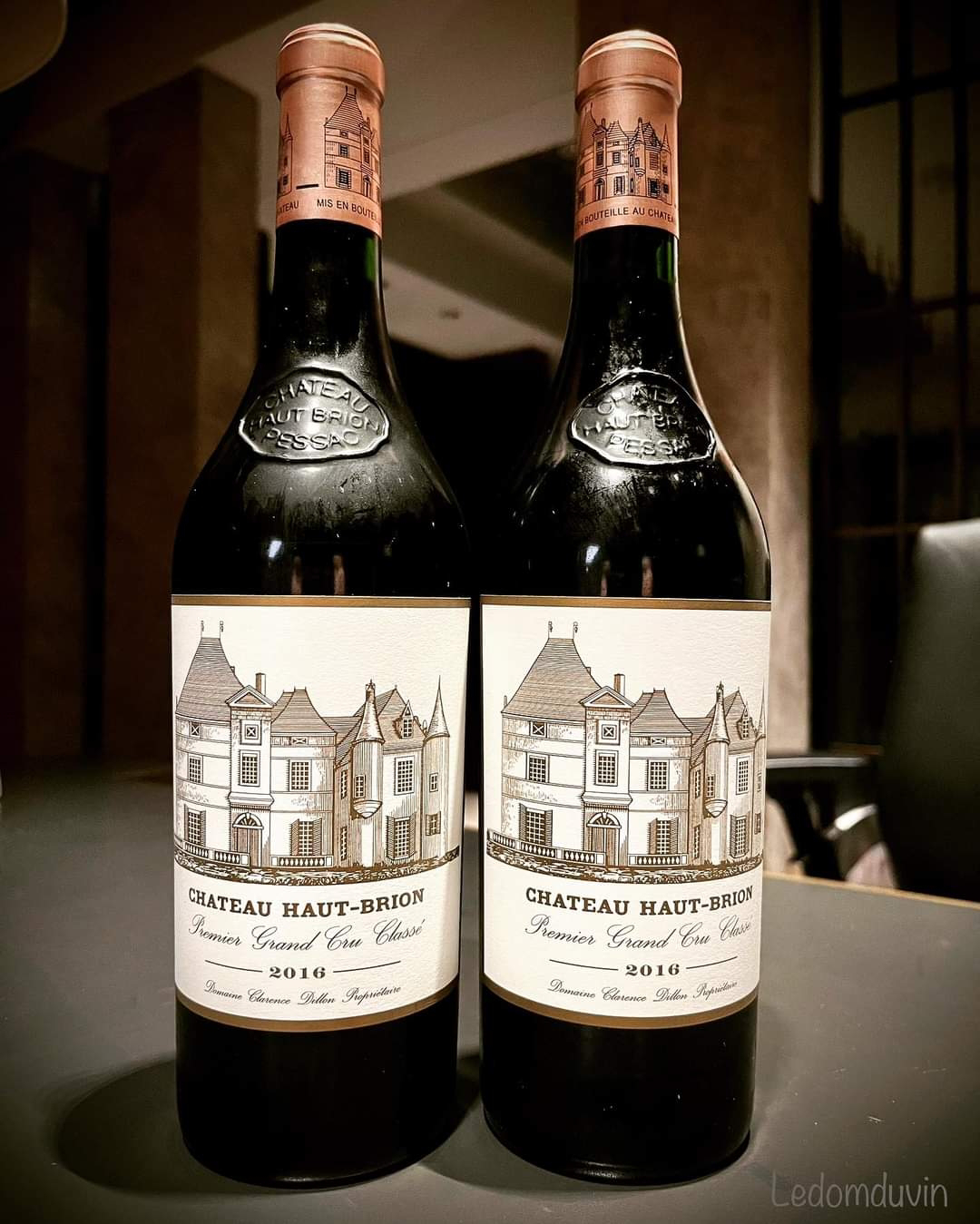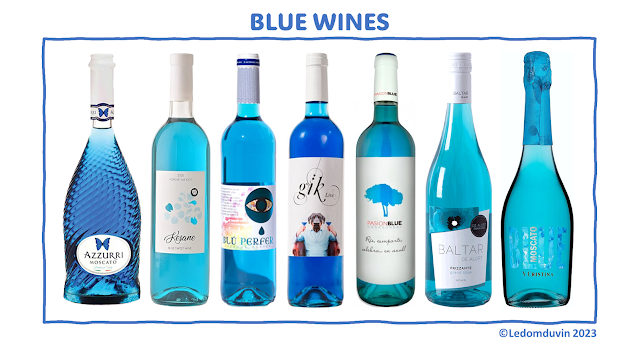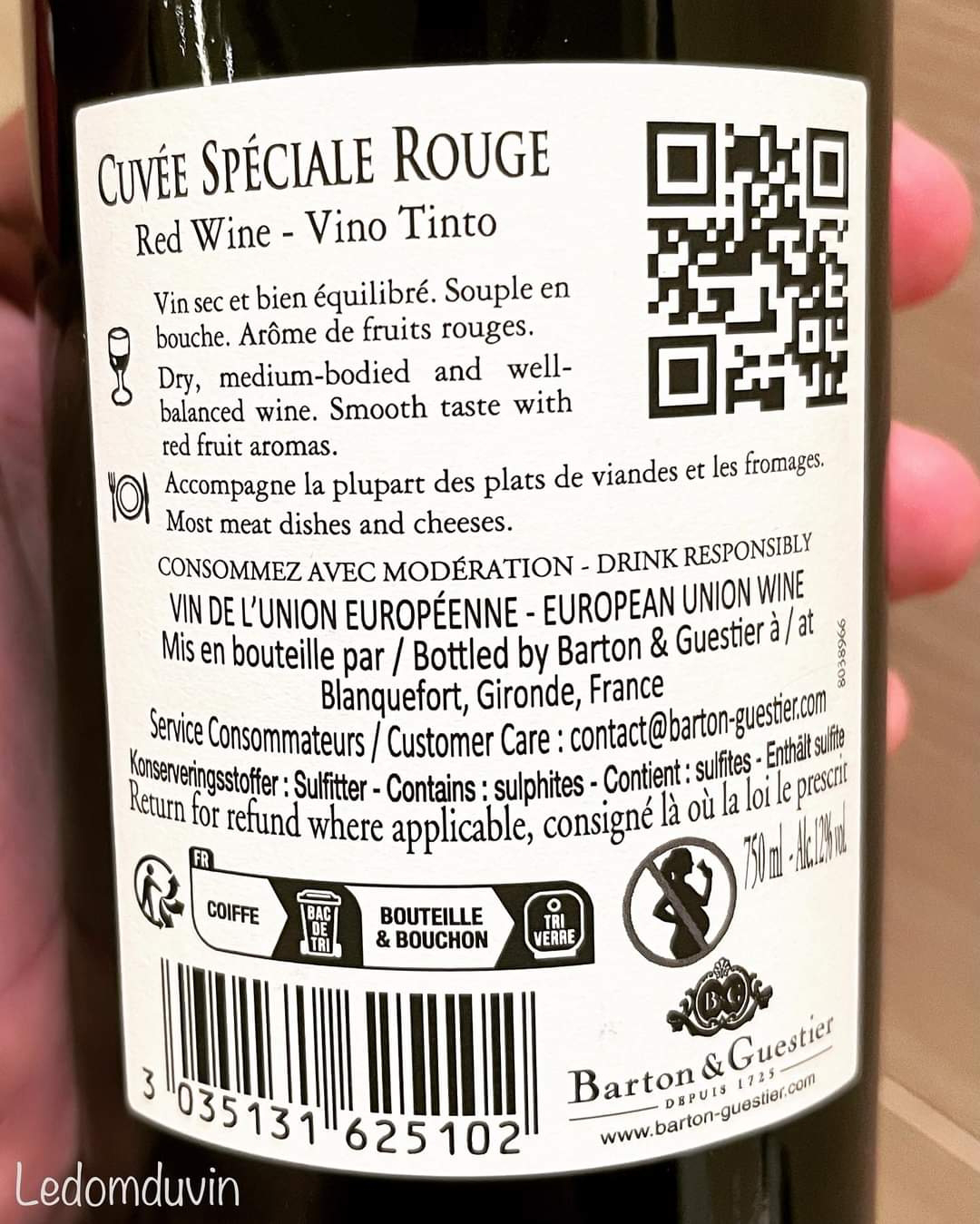Who needs a European wine?
When and where will they stop? And what will they invent next?
I had to take a picture of this wine as I had never seen such a label before and couldn’t even believe what I saw.
I mean, what is this?
For many reasons, properties, vignerons, and winemakers in many regions of France and other European countries already have difficulties selling their wines. And yet, some people still found a way to invent a genetic appellation, “Vin de l’Union Européenne", to sell and flood the market with more crapy wines.
What is it even supposed to mean? Is it a wine made from various grapes from different countries? And it is a “non-vintage” on top of that. So, is it made from various vintages, too?
By definition, a wine categorised as "Vin de l'Union Européenne" (or "Wine from the European Union") is a wine without a specific geographical indication. Meaning that the wine has been crafted with grapes originating from at least one or various countries of the European Union. The label may mention one or more countries or bear the words "Wine from the European Community or Union" or "Blend of Wines from different countries of the European Community”.
Wines that do not have a geographical indication still face some controversy today. Typically made with high-yielding grape varieties (such as Carignan or Aramon), the resulting wines usually have lower sugar content, weaker flavour and lack the typicity and complexity defined by the terroir's characteristics of a specified geographical indication. These so-called "table" wines are often nicknamed "big reds" or "generic", and for good reason.
Even the back label is a mess, displaying mentions in different languages (e.g. "Red Wine" in English, "Vino Tinto" in Spanish) with no indication whatsoever of where the wine is coming from or the grapes it is made with. And it has no vintage, either. Leaving the consumer in a state of wondering without giving much clues about where it was made and with what.
And there is no consistency either with wines without a geographical indication as they may come with or without mention of grape variety(ies) or vintage(s).
The only clues (on this particular bottle) are the brand's name (Barton & Guestier) and that it was bottled in Blanquefort (an outlying commune of the Bordeaux metropolitan area). So, can we assume that it was partly made with grapes from Bordeaux? Not at all, unfortunately, as it was just "bottled" in Bordeaux, but that does not mean anything. For all we know, the grapes could be some Carignan from the Languedoc and some Tempranillo from Spain (for example).
The worst part is that these wines are usually made with or from surplus production or unwanted wines from one or more particular estates, producers, cave cooperatives, regions or even countries. Therefore, some may present some "reminiscent characteristics" of a particular terroir, although no precise geographical origin is mentioned.
Yet, the taste or the gustative sensations of these so-called "reminiscent characteristics" might only be the fruit of your imagination influenced or suggested by some of the details on the label to deceive the consumer.
For example, this bottle stating "Barton & Guestier" and "Bottled in Blanquefort" might give the consumer the impression he or she is drinking a bottle of wine from Bordeaux, while the wine (and the taste) may have nothing to do with it.
Therefore, I'm asking the question: Why make a European wine? Who needs a European wine?
Moreover, it is made by "Barton & Guestier", one of the oldest wine houses in Bordeaux and one of the most famous French wine Négociants… What were they thinking, really? Which type of market are they trying to target or reach? And what kind of image is that giving them? Do they even care?
What is the purpose of inundating the market with such wines? Is it to help the ocean of wines (from Bordeaux and elsewhere) that have faced more and more difficulties in selling in recent years?
In my opinion, these difficulties are mainly due to a generation change. Millennials and Gen Z are not drinking or being interested in wine as much as the previous generations (Boomers and Gen X). It is also partly due to a lack of finance (e.g. inflation, etc.) and thus a budget to spend on wine compared to 15 - 20 years ago.
But it is also due to physical and mental health concerns and the constant bombarding of anti-alcohol campaigns in recent years. With each generation, time and people change, habits, customs and culture too.
As making wine became the new "El Dorado" in the late 90s and early 2000s, the difficulties might also be due to the market being now flooded with mediocre, inexpensive wines from everywhere in the world, making it even more difficult for consumers to decide what to buy and from where, unless guided by their local "caviste", expert or Sommelier.
So, imagine if they now face wines without any geographical indication, no grape variety or vintage either?
This particular bottle sells for about 10 Euros… which is unbelievable and deceiving as there are much better quality wines out there at this price or lower from specific appellations and terroirs offering much better value for money than this wine.
This label also fools the consumers even more by stating "Cuvée Spécial est une sélection réalisée par les Œnologues de Barton & Guestier dont l'expertise garantit les meilleures qualités", which translates by “Cuvée Spécial is a selection made by the Oenologists of Barton & Guestier whose expertise guarantees the best qualities”... which is just a marketing gimmick.
How can they guarantee the quality of this wine without providing its origin, the grapes it was made with and the vintage?....
Disappointing and disappointed...
I did not make this post to get some "likes". I made this post to point the finger at a problem. Why make a European wine? Who needs a European wine? And frankly, how low will they go?
Whether or not this helps vignerons and winemakers to liquidate their surplus or unwanted wines is indeed a question that arises. However, even though these wines without geographical indication have existed for several decades, they are no longer welcome in a market that has difficulty selling its wines. Especially if their price is higher than some better quality wines from renowned appellations and regions.
Dom
@ledomduvin #ledomduvin #lesphotosadom #wine #vin #vino #wein #whoneedsaeuropeanwine #europeanwine #bartonguestier
Unless stated otherwise, all rights reserved ©LeDomduVin 2023, on all the contents above including, but not limited to, photos, pictures, drawings, illustrations, collages, visuals, maps, memes, posts, texts, writings, quotes, notes, tasting notes, descriptions, wine descriptions, definitions, recipes, graphs, tables, and even music and video (when and where applicable).








